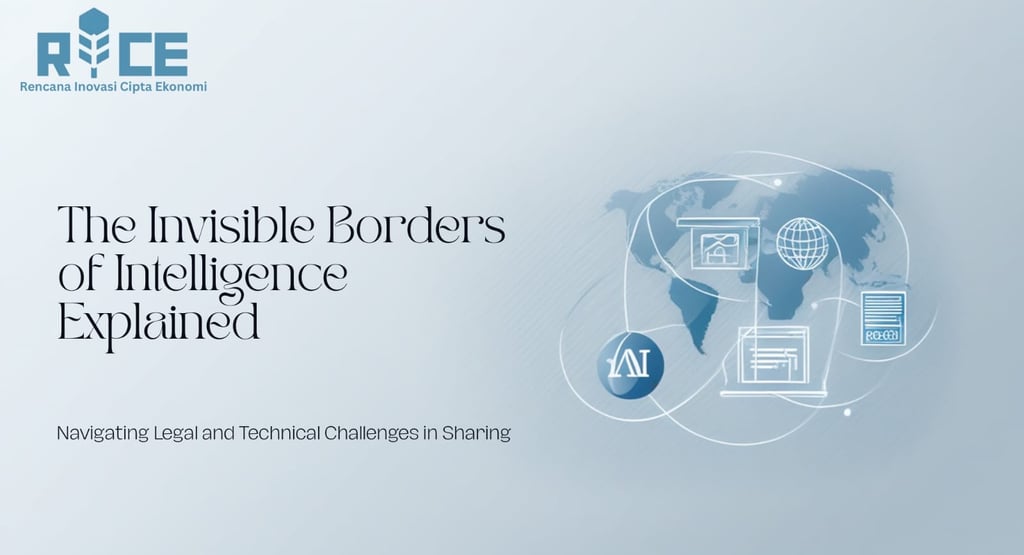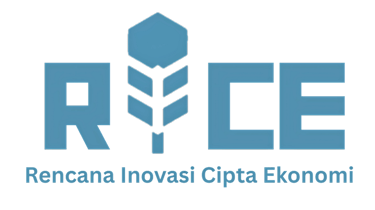Navigating Legal and Technical Challenges in Cross-Border AI Model Sharing
Blog post desExplore the legal battlegrounds and technical breakthroughs shaping global AI model sharing—and how innovators navigate sovereignty, security, and scalability. cription.
TECHNOLOGY
Ratna
8/19/20259 min read


The Invisible Borders of Intelligence: Navigating Legal and Technical Challenges in Cross-Border AI Model Sharing
The global AI landscape pulsates with a tantalizing promise: democratized intelligence. A model trained in California can diagnose diseases in Kenya; algorithms honed in Singapore optimize supply chains across Europe. Yet this vision of seamless global AI collaboration collides with a fragmented reality of legal borders, technical barriers, and sovereign anxieties. When a Singaporean healthcare provider recently attempted to deploy a U.S.-trained diagnostic model using patient data localized under Singapore’s PDPA, they encountered a regulatory wall requiring costly re-engineering and compliance verification. This friction exemplifies the complex challenges stifling the potential of cross-border AI model sharing.
As nations vie for AI supremacy—exemplified by initiatives like the U.S. "Winning the AI Race" Action Plan and China’s aggressive state-supported data curation—the tension between collaboration and control defines this new frontier. Organizations navigating this space face a daunting array of hurdles, from incompatible regulatory regimes and data localization laws to the technical complexities of maintaining model integrity across decentralized infrastructures and evolving security threats.
The Tangled Web: Regulatory Fragmentation & Legal Minefields
The most immediate challenge for cross-border AI sharing lies in navigating an incoherent patchwork of global regulations. These frameworks often impose conflicting obligations, creating compliance paralysis.
GDPR’s Long Shadow: The EU’s General Data Protection Regulation (GDPR) remains a global benchmark with extraterritorial reach. Its strict rules on cross-border data transfers (Chapter V) apply whenever models are trained on EU personal data, regardless of where training occurs. Valid transfer mechanisms like Standard Contractual Clauses (SCCs) require complex Transfer Impact Assessments (TIAs), evaluating if the destination country offers "essentially equivalent" protection—a high bar often complicated by foreign surveillance laws (Schrems II ruling). Crucially, the European Data Protection Board (EDPB) clarified that GDPR applies to all phases of AI development involving personal data, including training and fine-tuning. Recent enforcement underscores this: Uber faced a €290 million fine for unlawful data transfers, while Clearview AI was fined €30.5 million for scraping biometric data without a lawful basis.
Data Localization & Sovereignty Mandates: Countries increasingly mandate data residency. China’s Personal Information Protection Law (PIPL) and Cybersecurity Law impose strict localization requirements for critical data. Russia, Vietnam, and Indonesia have similar rules. These laws directly conflict with the distributed nature of cloud-based AI training and deployment, forcing organizations to fragment datasets or build expensive local infrastructure. The U.S. Department of Justice’s 2025 rule restricting outbound transfers of sensitive personal data to "foreign adversaries" adds a national security dimension that privacy teams must now assess.
The U.S. Patchwork & Shifting Sands: Unlike the EU, the U.S. lacks a comprehensive federal privacy law. Instead, businesses face a growing patchwork of state-level regulations (CCPA in California, CPA in Colorado, etc.) alongside sector-specific rules (HIPAA, GLBA). The 2025 U.S. AI Action Plan explicitly threatens to withhold federal AI funding from states enacting "burdensome" AI regulations, aiming to centralize control but creating further near-term uncertainty. Ambiguity persists around key issues like AI training data copyright. While President Trump publicly dismissed the feasibility of paying for all copyrighted training material, stating, "You can’t be expected to have a successful AI program when every single article, book or anything else that you’ve read or studied, you’re supposed to pay for... it’s not doable", court battles (e.g., Bartz v. Anthropic, Kadrey v. Meta) continue, leaving fair use for AI training unsettled.
The "Brussels Effect" vs. National Initiatives: While the EU AI Act sets a risk-based framework influencing global norms, other jurisdictions are developing their own AI-specific rules. China focuses on algorithmic governance and security reviews, while the U.S. emphasizes innovation and countering China. This divergence creates compliance headaches for globally deployed models.
Beyond Compliance: Technical & Operational Barriers to Seamless Sharing
Even when legal pathways exist, significant technical and operational hurdles impede efficient and secure cross-border AI model sharing:
Data Quality & Bias Amplification: Models shared across borders often encounter culturally or demographically skewed data in new deployment environments. A credit scoring model trained on U.S. financial data may perform poorly or unfairly in Kenya due to different economic behaviors or data availability, leading to embedded bias and reduced efficacy. Ensuring models remain robust, fair, and accurate in diverse contexts requires continuous monitoring and localized fine-tuning, which is hampered by data transfer restrictions.
The Compute Chokepoint: Training and running sophisticated AI models demands massive computational power ("compute"). Access to advanced computing infrastructure (GPUs, TPUs) is unevenly distributed globally. While the U.S. AI Action Plan emphasizes building domestic AI infrastructure and export controls on high-end compute, this can limit access for partners in developing nations, hindering truly global collaboration.
Security Vulnerabilities & Adversarial Threats: Cross-border sharing expands the attack surface. Models in transit or deployed in diverse environments face risks like:
Model Inversion Attacks: Extracting sensitive training data from the model itself.
Adversarial Poisoning: Manipulating data during fine-tuning to degrade performance or insert backdoors.
Evasion Attacks: Crafting inputs to cause misclassification during operation.
Differing security standards and enforcement across jurisdictions exacerbate these risks. Gartner predicts that by 2027, over 40% of AI-related privacy violations will stem from unintended cross-border data exposure via Generative AI tools.
The Black Box Problem & Compliance Verification: The inherent opacity ("black box" nature) of many complex AI models, particularly deep learning, makes it extraordinarily difficult to provecompliance with regulations like GDPR’s right to explanation or demonstrate the absence of bias. Auditing a model trained in one jurisdiction and deployed in another becomes a major technical and logistical challenge.
Infrastructure & Interoperability Gaps: Disparities in digital infrastructure (bandwidth, cloud access) and a lack of standardized model interoperability frameworks hinder seamless deployment. Moving large model weights across borders with limited bandwidth can be impractical.
Mitigation Strategies: Navigating the Labyrinth
Organizations can adopt a multi-pronged strategy to overcome these formidable challenges:
Privacy-Enhancing Technologies (PETs): These technologies enable collaboration on data or models without exposing raw sensitive information. Key solutions include:
Fully Homomorphic Encryption (FHE): Allows computation on encrypted data. A U.S. hospital could collaborate with a European research institute by training a model on FHE-encrypted EU patient data without ever decrypting it, potentially satisfying GDPR requirements. Singapore’s IMDA has documented successful FHE use cases for cross-border collaboration.
Secure Multi-Party Computation (SMPC): Splits data or model computations between parties so no single entity sees the whole dataset. Useful for federated learning scenarios.
Synthetic Data: Generating artificial datasets that mimic the statistical properties of real data without containing actual personal information. Useful for model development and testing where data cannot be transferred.
Differential Privacy: Adding carefully calibrated noise to datasets or model outputs to prevent the identification of individuals while preserving overall utility.
Robust Governance & Legal Frameworks:
AI-Specific TIAs & DPIAs: Conduct thorough Transfer Impact Assessments and Data Protection Impact Assessments specifically tailored to AI projects, evaluating both data transfer risks and AI-specific risks like bias or opacity. The EDPB emphasizes this need.
Enhanced Contracting: Move beyond standard SCCs. Negotiate AI-specific Data Processing Agreements (DPAs) with cloud providers and partners, explicitly covering model training, deployment, data usage, audit rights, and breach notification procedures related to AI. Binding Corporate Rules (BCRs) remain a viable, though complex, option for multinational groups.
Vendor Risk Management 2.0: Implement continuous monitoring of AI vendors, not just point-in-time checks. Demand transparency on training data origins, model architectures, sub-processors, and security practices. TrustArc recommends tiering vendors by the criticality of their AI capabilities.
Technical & Architectural Solutions:
Federated Learning (FL): Train models locally on devices or within jurisdictions, sharing only model updates (gradients), not raw data. This minimizes data transfer but requires sophisticated infrastructure and introduces challenges in managing model drift and update consistency.
Edge Deployment: Run models locally on devices or regional servers, minimizing the need to transfer data across borders for inference. Useful for real-time applications and sensitive data.
Model Segmentation & Modularity: Design models where sensitive components handling regulated data can be kept local or within compliant jurisdictions, while less sensitive modules are shared globally.
Strategic Data Sourcing & Diplomacy:
High-Quality Licensed Data: Invest in legally obtained, high-quality datasets for training and fine-tuning, reducing reliance on scraping and copyright ambiguity. The U.S. AI Action Plan highlights the critical need for large, high-quality datasets.
International Data Alliances: Advocate for and leverage government-led efforts to establish bilateral/multilateral data sharing agreements focused explicitly on AI development. Proposals suggest the U.S. Trade Representative (USTR) should prioritize securing access to high-value scientific, health, and industrial data from allies through trade agreements. The U.S.-Kenya data agreement and the EU-U.S. Data Privacy Framework are foundational steps, albeit not AI-specific.
Transparency, Explainability & Auditability: Invest in Explainable AI (XAI) techniques to make models more interpretable, aiding compliance and trust. Maintain rigorous audit trails documenting data provenance, model lineage, training processes, and testing results across borders.
Case Studies: Lessons from the Front Lines
Clearview AI’s Global Scraping Backlash: The facial recognition company’s practice of scraping billions of images globally without consent led to massive fines (€30.5 million under GDPR), bans in multiple countries, and lawsuits. This case highlights the extreme risk of ignoring data origin and transfer regulations, especially concerning biometric data.
Healthcare Research Collaboration Using FHE: A multinational pharmaceutical consortium used Fully Homomorphic Encryption to pool and analyze sensitive genomic data from hospitals across Europe, the US, and Asia for drug discovery. By processing data in its encrypted state, they complied with local data residency laws (like GDPR and PIPL) while enabling crucial collaborative research.
The "Replika" Chatbot GDPR Fine: Italy fined the U.S.-based developer of the Replika AI chatbot €5 million for deploying the emotionally responsive chatbot in Europe without a valid legal basis for processing personal data, sufficient transparency, or adequate safeguards for minors. This underscores the risks of deploying AI services developed under one regulatory mindset into stricter jurisdictions without adaptation.
Future Outlook: Towards Frictionless Intelligence?
The trajectory points towards both heightened challenges and potential solutions:
Increasing Regulatory Complexity: More jurisdictions will enact AI-specific laws, demanding greater compliance sophistication. Focus areas will likely include foundation model governance, deepfakes, AI liability, and worker protections.
Technological Advancements: PETs like FHE and SMPC will mature, becoming more efficient and accessible. Standardized model interoperability and federated learning frameworks will gain traction. Decentralized AI platforms leveraging blockchain-like technologies may emerge.
Geopolitical Data Alliances: Expect intensified competition, particularly between the U.S./allies and China, to secure strategic data access and set global AI standards. Initiatives like the U.S. AI Action Plan’s push for exporting "full-stack AI technology packages" and restricting adversary access to compute reflect this. Success may hinge on building trusted data sharing frameworks among democratic nations.
Copyright Clarity (Eventually): Courts and legislatures will gradually define the boundaries of copyright and fair use in AI training, though significant uncertainty will persist in the near term.
Operationalization of Compliance: Tools for automated compliance (data mapping, TIA management, real-time risk monitoring) integrated with AI development pipelines (MLOps) will become essential.
Conclusion: Embracing Complexity with Strategic Resilience
Cross-border AI model sharing is not a technical challenge solved in isolation; it's a complex socio-techno-legal puzzle. The promise of globally accessible, powerful AI is undeniable, offering solutions to humanity's grand challenges in health, climate, and development. Yet, realizing this potential requires acknowledging and strategically addressing the formidable barriers erected by sovereign data control, divergent regulatory philosophies, and technical vulnerabilities.
The path forward demands proactive adaptation, not reactive compliance. Organizations must embed privacy, security, and ethical considerations into the very fabric of their AI development lifecycle—adopting Privacy-Enhancing Technologies not as an afterthought, but as foundational infrastructure; engaging in rigorous, continuous governance that spans jurisdictions; and advocating for pragmatic international cooperation that fosters innovation while protecting fundamental rights.
While initiatives like the U.S. AI Action Plan prioritize acceleration and dominance, and the EU AI Act emphasizes risk mitigation and fundamental rights, the most successful global AI strategies will likely blend innovation with robust, verifiable accountability. The organizations that thrive will be those that view navigating the cross-border labyrinth not merely as a compliance burden, but as a core competitive competency enabling responsible and transformative global AI collaboration. The friction points today—regulatory uncertainty, technical hurdles, geopolitical mistrust—are not permanent roadblocks, but rather the growing pains of an interconnected intelligence ecosystem struggling to define itself. The future belongs to those who can navigate this complexity with strategic foresight and unwavering commitment to responsible innovation.
References
Skadden, Arps, Slate, Meagher & Flom LLP. "White House Releases AI Action Plan: Key Legal and Strategic Takeaways for Industry." Skadden Publication / AI Insights, July 2025. https://www.skadden.com/insights/publications/2025/07/the-white-house-releases-ai-action-plan
Chang, Qirui. "The Legal and Regulatory Issues of AI Technology in Cross-Border Data Flow in International Trade." Theoretical Economics and Business Management Review, vol. 2024, 09 Aug. 2024. DOI: https://doi.org/10.62051/cyw9y102 (Accessed via Wepub: https://wepub.org/index.php/TEBMR/article/view/2874)
Wilson Elser Moskowitz Edelman & Dicker LLP. "Takeaways: America's AI Action Plan For Global Technological Dominance." Mondaq, 18 August 2025. https://www.mondaq.com/unitedstates/new-technology/1666992/takeaways-americas-ai-action-plan-for-global-technological-dominance
Hwang, Tim, and Josh Levine. "Securing Access to Foreign Data Flows for AI." Rebuilding.Tech, [Date Accessed: 2025]. https://www.rebuilding.tech/posts/securing-access-to-foreign-data-flows-for-ai
Dialzara Team. "Cross-Border AI Data Transfers: Navigating Challenges." Dialzara Blog, 9 May 2024. https://dialzara.com/blog/cross-border-ai-data-transfers-navigating-challenges
TrustArc. "Cross-Border Data Transfers in 2025: Regulatory Changes, AI Risks, and Operationalization." TrustArc Resource Center, 2025. https://trustarc.com/resource/webinar-cross-border-data-transfers-in-2025-regulatory-changes-ai-risks-and-operationalization/
TrustArc. "Generative AI and Cross-Border Data Transfers: Navigating Risk in a Fractured Regulatory Landscape." TrustArc Resource Center, [Date Accessed: 2025]. https://trustarc.com/resource/generative-ai-cross-border-data-transfers/
TechGDPR. "GDPR Compliance for AI: Managing Cross-Border Data Transfers." TechGDPR Blog, [Date Accessed: 2025]. https://techgdpr.com/blog/gdpr-compliance-for-ai-managing-cross-border-data-transfers/
Duality Technologies. "Cross Border Data Transfer: Global Data Compliance Challenges and Solutions." Duality Tech Blog, [Date Accessed: 2025]. https://dualitytech.com/blog/cross-border-data-transfer/
#AIregulation #CrossBorderAI #DataSovereignty #PrivacyTech #AIInnovation #GlobalAI #MachineLearning #EthicalAI #FederatedLearning #FutureOfAI #DailyAITechnology
RICE AI Consultant
To be the most trusted partner in digital transformation and AI innovation, helping organizations grow sustainably and create a better future.
Connect with us
Email: consultant@riceai.net
+62 822-2154-2090 (Marketing)
© 2025. All rights reserved.


+62 851-1748-1134 (Office)
IG: @riceai.consultant
